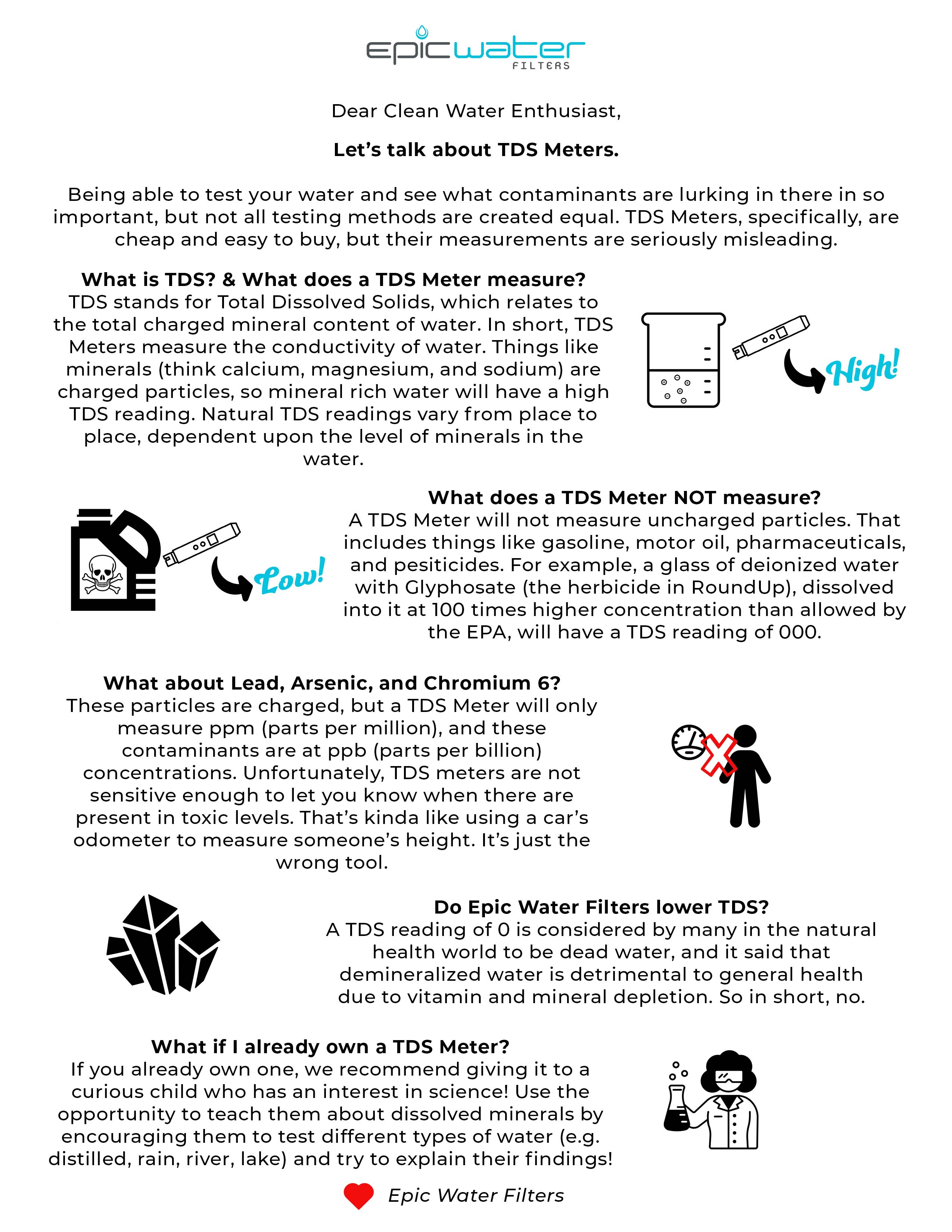Does Your Filter Remove Total Dissolved Solids (TDS)?Updated 2 years ago
The recent popularity of inexpensive and portable TDS (Total Dissolved Solids) meters have now made testing tap water fairly common practice. However, these devices really don’t tell the whole story. Most people are led to believe that high TDS readings are bad when this is not the case. The PPM reading is not an accurate indication of water quality. Total Dissolved Solids aren’t linked with adverse health effects. In fact, the main component of TDS are minerals such as calcium, magnesium, potassium, sodium, etc. So, higher TDS readings often indicate higher levels of trace minerals naturally occurring in water (and are actually desirable). In fact, bottled mineral water will often have readings in excess of 250 PPM!
Our filters utilize a patented Ionic-Adsorption micro-filtration process that features a 2.0-micron pore size. This allows us to have the highest contaminant reduction in the industry! The best part about our product is that it is able to filter out the chemicals, disinfectants and heavy metals in one step but is able to leave the healthy mineral content of the water in tact. Our filters are not designed to remove minerals. So if you’re testing your water with a TDS meter, know that your readings will vary and that a PPM reading higher than the tap water is not an indication of a faulty filter.
How can this be?
One of the things the TDS meter does is measure the conductivity (positive or negative charge) of the water. Our filters use an Ionic adsorption process leaving the water with a slightly positive charge. This can result in TDS readings higher than the tap water itself. The TDS meters are sensitive to changes in positive (+) or negative (-) charges and a higher reading does not necessarily reflect a poor water quality. In essence, it actually indicates that the filter is working and doing it’s job to remove contaminants.
Check out our Infographic below:
